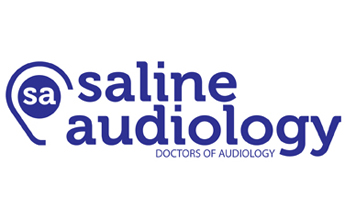What Is Hearing Impairment?
Hearing impairment occurs when there’s a problem with or damage to one or more parts of the ear.
- Conductive hearing loss results from a problem with the outer or middle ear, including the ear canal, eardrum, or ossicles. A blockage or other structural problem interferes with how sound gets conducted through the ear, making sounds seem quieter. In many cases, conductive hearing loss can be corrected with medications or surgery.
- Sensorineural (pronounced: sen-so-ree-nyour-ul) hearing loss results from damage to the inner ear (cochlea) or the auditory nerve. The most common type is caused by the outer hair cells not functioning correctly. The person has trouble hearing clearly, understanding speech, and interpreting various sounds. This type of hearing loss is permanent. In many cases, hearing aids can help the person hear normally.
In more severe cases, both outer and inner hair cells aren’t working correctly. This is also a type of permanent hearing loss and usually people can benefit from cochlear implants. In some other cases, the outer hair cells work correctly, but the inner hair cells or the nerve are damaged. This type of hearing loss is called auditory neuropathy spectrum disorder. The transmission of sound from the inner ear to the brain is then disorganized.
Children with auditory neuropathy spectrum disorder can develop strong language and communication skills with the help of medical devices, therapy, and visual communication techniques. - Mixed hearing loss happens when someone has both conductive and sensorineural hearing problems.
- Central hearing loss happens when the cochlea is working properly, but other parts of the brain are not. This is a less frequent type of hearing loss and is more difficult to treat.
- Auditory processing disorders (APD). This is not exactly a type of hearing loss because someone with APD can usually hear well in a quiet environment. But most people with APD have difficulty hearing in a noisy environment, which is the usual environment we live in. In most cases, APD can be treated with proper therapy.
The degree of hearing impairment can vary widely from person to person. Some people have partial hearing loss, meaning that the ear can pick up some sounds; others have complete hearing loss, meaning that the ear cannot hear at all (people with complete hearing loss are considered deaf). In some types of hearing loss, a person can have much more trouble when there is background noise. One or both ears may be affected, and the impairment may be worse in one ear than in the other.
The timing of the hearing loss can vary, too. Congenital hearing loss is present at birth. Acquired hearing loss happens later in life — during childhood, the teen years, or in adulthood — and it can be sudden or progressive (happening slowly over time).
According to the National Institute on Deafness and Other Communication Disorders, about 37.5 million American people aged 18 and over are deaf or hearing impaired. That’s about 15 out of every 100 people. Another 26 million are exposed to hazardous noise levels on a regular basis. Hearing loss is also the most common birth anomaly.
What Causes Hearing Impairment?
The most common cause of conductive hearing loss in kids and teens is otitis (pronounced: o-tie-tus) media, which is the medical term for an ear infection that affects the middle ear. Ear infections cause a buildup of fluid or pus behind the eardrum, which can block the transmission of sound. Even after the infection gets better, fluid might stay in the middle ear for weeks or even months, causing difficulty hearing.
But this fluid is usually temporary, and whether it goes away on its own (which is usually the case) or with the help of medications, once it’s gone a person’s hearing typically returns to normal. Blockages in the ear, such as a foreign object, impacted earwax or dirt, or fluid due to colds and allergies, can also cause conductive hearing loss.
People also get conductive hearing loss when key parts of the ear — the eardrum, ear canal, or ossicles — are damaged. For example, a tear or hole in the eardrum can interfere with its ability to vibrate properly. Causes of this damage may include inserting an object such as a cotton swab too far into the ear, a sudden explosion or other loud noise, a sudden change in air pressure, a head injury, or repeated ear infections.
Sensorineural hearing impairment results from problems with or damage to the inner ear or the auditory nerve. Its causes include:
- Genetic disorders. Some genetic (inherited) disorders interfere with the proper development of the inner ear and/or the auditory nerve.
- Injuries to the ear or head. Injuries such as a skull fracture can cause hearing loss.
- Complications during pregnancy or birth. Some babies are born with hearing impairment due to infections or illnesses that the mother had while she was pregnant, which can interfere with the development of the inner ear. Premature babies are also at higher risk for hearing impairment.
- Infections or illnesses. Certain conditions, such as repeated ear infections, mumps, measles, chickenpox, and brain tumors, can damage the structures of the inner ear.
- Medications. Certain medications, such as some antibiotics and chemotherapy drugs, can cause hearing loss.
- Loud noise. A sudden loud noise or exposure to high noise levels (such as loud music) over time can cause permanent damage to the tiny hair cells in the cochlea, which then can’t transmit sounds as effectively as they did before.
The outer hair cells are usually affected first, because they’re very sensitive to loud sounds. Remember that these cells help us hear soft sounds. If exposure to loud noise continues for long periods of time, the inner hair cells and even the auditory nerve can become affected.
